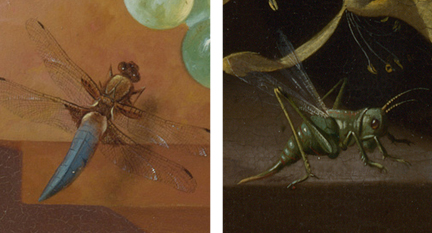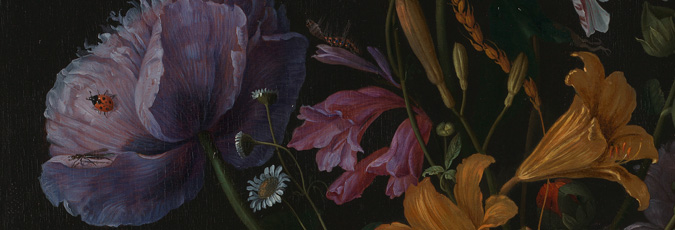Insects
Looking closely at Dutch flower paintings reveals a busy world of insect and animal life. Flies, beetles, ladybirds, ants, caterpillars, moths and butterflies, lizards, and even the occasional mouse dwell amidst the carefully arranged flowers and fruits. Occasionally blossoms and foliage show damage caused by grazing insects.
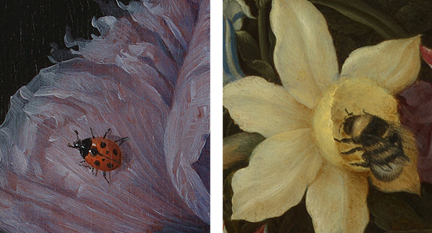
The proliferation of these tiny creatures in flower paintings is symptomatic of the Dutch curiosity about the natural world that characterised the early modern era. Anthonie van Leeuwenhoek’s experiments with lenses and invention of the microscope opened new worlds for study; the Dutch entomologist Jan Swammerdam pioneered the use of a magnifying glass to systematically classify insects.
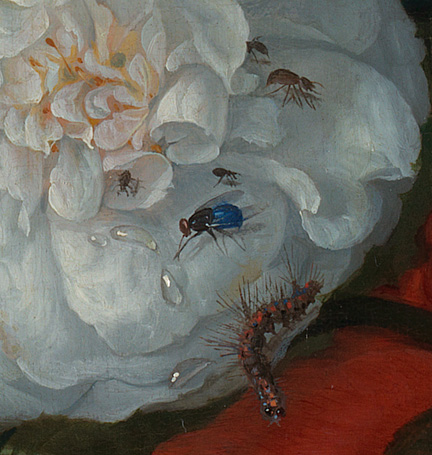
In contrast to the rare flowers and exotic shells that appear in Dutch still lifes, most of the insects and tiny creatures are common, native species. Even the red admiral butterfly, with its striking dark brown, red, and black wing pattern, was common throughout northern Europe and noted for being one of the last to fly before winter set in.
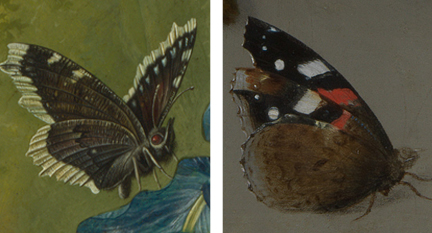
Dutch flower painters sometimes included these tiny creatures for their symbolic associations, although not every insect in every painting can or should be interpreted in this way. The butterfly was traditionally a symbol of the resurrection of the body after the Last Judgement, its transformation from earth-bound caterpillar to air-borne beauty a metaphor for a soul freed of earthly encumbrances and ascending to Heaven. Ants were symbols of industry and diligence, while flies tended to have negative associations.
